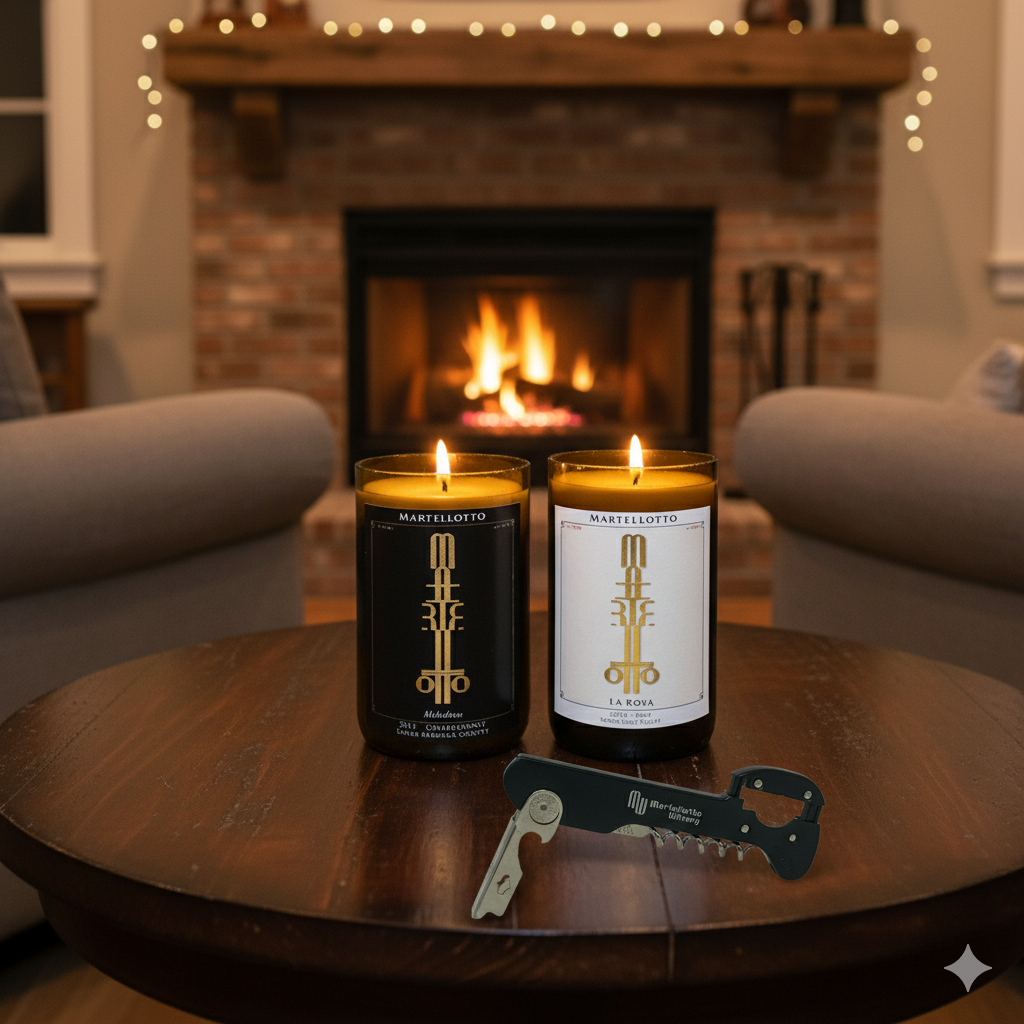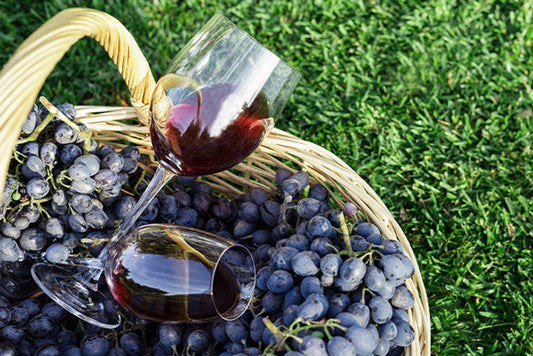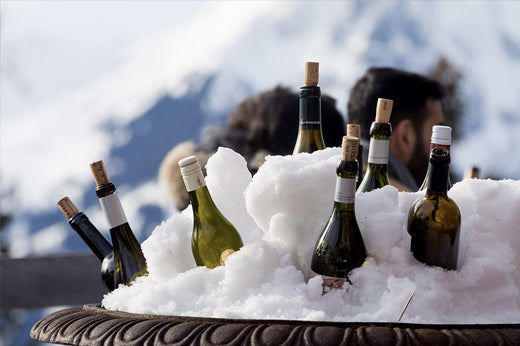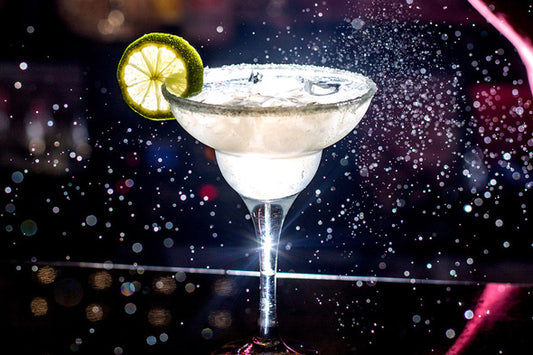
How to Make Limoncello in 2020 with This Sunny Homemade Limoncello Recipe
You can easily make homemade limoncello! Once done, you can pour yourself a small dose of liquid sunshine any time to carry you through the long dark days of winter. In the Southern Hemisphere, shimmery limoncello will cool you down on a hot summer day.
Why Make Homemade Limoncello?
Limoncello. The sound of this word conjures lazy days sitting in the sun on the Italian coastline. This Italian word means little lemon: “limon” plus the diminutive “cello.”
The word lemon likely originates from the Persian word for citrus, “limun.” Not protected like Champagne, the term "limoncello" was trademarked in 1988.
Limoncello is the deeply lemon-flavored liqueur found primarily in the Campania region of Italy. This area encompasses the Amalfi Coast, Sorrento, and the isle of Capri. Most lemons in Italy grow here. The liqueur is called Limoncino in the north of the country.

Lemons, originating in the Middle East, have been grown in the Amalfi area since the mid-17th century. Citrus fruits, including lemons, have high vitamin C content, so ancient travelers carried them to avoid scurvy, a disease brought on by lack of vitamin C.
Vitamin C is necessary for the human diet. The human body does not manufacture vitamin C so it has to receive it from external sources.
Lemons also contain antioxidants and phytochemicals. In addition to preventing scurvy, they provide additional health benefits such as:
- boosting the immune system
- lowering the risk of stroke
- supporting collagen formation, which strengthens blood vessels, muscles, and skin
- lowering blood pressure
- suppressing the common cold
- assisting in cancer and asthma prevention and weight loss
- increasing iron absorption
Lemons are excellent for your health.

The Special Lemons of Campania
The lemon used to make the original limoncello of the Amalfi coast is called the Sfusato d'Amalfi, the Amalfi Lemon.
This variety began as a cross between the local bitter oranges and the lemon brought from the Middle East. Crossbreeding continued up to the current lemon.
Longer and more pointed in shape, the Amalfi lemon is larger than most commercial lemons. The Sorrento lemon, from the nearby town of Sorrento, has a rounder shape.
Both lemons are very fragrant and have high levels of essential oils and vitamin C. They also have the bright lemon hue that permeates the liqueur from the natural oil.
The best limoncello comes from lemons with high levels of essentials oils because the zest is the critical ingredient. The zest provides flavor and color. The white pith of the rind adds bitterness, so it is not used, nor is the internal fruit, in making the liqueur.
Italian law protects these lemons through the Consortium for the Promotion of the Amalfi Coast Lemon or the Consorzio di Tutela del Limone Costa d'Amalfi IGP.
IGP rules prohibit artificial colors or flavors, chemicals, emulsifiers, or preservatives. IGP status ensures authenticity, provenance, and traditional production guidelines.
Lemon production historically involved entire towns with men and women taking different roles. Today, men and women are equally involved, and lemon production promotes tourism. You find lemons, lemon-themed items, and limoncello everywhere.
On steep hillsides, stone walls surround areas of lemon tree cultivation. These steep hillsides and proximity to the sea provide unique microclimates for nurturing the fruit.
Pergolas made from straw matting cover the trees, protecting them from the cold. Trees flower in May and the harvest takes place by hand between February and October.
Amalfi lemon trees take three years to bear fruit and will continue to bear fruit for upwards of 100 years.

Lemons and Limoncello History
While lemons are ancient and hybrid fruiting trees, they likely originated in the Assam region of Southern China, between Myanmar and Bhutan. China remains one of the world’s largest exporters of lemons, but you can’t find Chinese limoncello - yet.
India, Iran, and Turkey all produce lemons. As traders brought the plants around the world from the Middle East, the trees thrived in dry, warm, Mediterranean-type climates.
Italy, including Sicily, and Spain export the most lemons from Europe. The trees have grown in these two countries for over a thousand years.
Brazil, Mexico, the U.S., and Argentina produce large amounts of lemons. Trees came to the Americas with Columbus. Florida and California produce the most lemons in the U.S.
Not all these countries make limoncello.
Though the Amalfi lemon is ancient, limoncello’s history only goes back to around the turn of the 20th century. Many an Italian grandma and grandpa made homemade lemon liquor. Some served their homemade concoctions in neighborhood bars.
Each region or island has a limoncello history with Amalfi’s rumored to be the oldest. An entrepreneur from the isle of Capri, Massimo Canale, used his nonna’s (grandma’s) recipe to make the limoncello that he trademarked in 1988.
Limoncello is popular both in Italy and around the world. You can find limoncello, both commercial and homemade versions, in France, Malta, the U.S., and Argentina.
In Argentina, many Italian and even meat restaurants will serve their local version of a chilled limoncello after your meal.
In California, 80% of lemons grown in the US come from Ventura County. A local limoncello is produced there.

How to Enjoy Shimmery Limoncello
Though high in alcohol, limoncello delivers aromatics, sweetness, lemon flavor, and balance. The taste is sweet and tart, strong and soothing.
Traditionally drunk as a digestif, it was served cold in small, slim glasses and sipped after a meal. Today, you can drink it before dinner as an aperitif, after dinner as a digestif, or anytime. Creative bar chefs are making innovative cocktails with the spirit.
Commercial producers exist, but only the hand-crafted versions deliver the right balance of flavor, alcohol, and sweetness. Commercial products may include artificial colors and flavors to imitate the original lemons, chemicals for shelf life, and emulsifiers to mimic the opaque liquid.
The combination of the essential oils blended with water act to create the opaque look of the final product, as happens with absinthe.
Serve limoncello at room temperature in cooler months and freezer cold during the hot summer months. Lemoncello makes a great spritz when added to sparkling water. Limoncello makes a delicious ingredient for salad dressings, ice creams, sorbets, gelatos, cookies, pound cakes, tarts, and more.

Homemade Limoncello Recipe Tips
Recipes vary, but the essential ingredients remain organic lemons, neutral spirits, sugar, and water. These ingredients plus time create the perfect drink. Call it “natural” liqueur to impress “natural” wine hipsters.
By making homemade limoncello, you control the quality and determine the taste based on the amount of each ingredient.
Many people use the standard Eureka lemons found most often in supermarkets. Try to find a lemon high in essential oils to create a more colorful, deeper flavored limoncello. Look for fruits with thicker peels and deep color. Commercial lemons will yield a less intense final product.
Some recipes require only four days while others require months. Which method you choose depends on your timing and patience.
Use Everclear as the base liquor if you can find it, or any other grain alcohol. Vodka is popular due to its availability, but the result will not be the same. Due to it’s lower level of alcohol, vodka and lower proof alcohol will not extract the same amount of lemon oil and flavor.
Because of the higher alcohol content, you can keep limoncello in the freezer. Be sure to leave space in the bottle for expansion of the liquid inside the bottle.
Limoncello is made best from its roots, from a simple, honest recipe.

How to Make Limoncello with the Martellotto Limoncello di California Recipe
Greg Martellotto, owner of Martellotto Winery in Buellton, CA, has an Italian background.
His grandparents immigrated from Puglia, in Southern Italy in the heel of the boot. He met many cousins and family members there for the first time during a study abroad program in college.
“I learned that my family is very resourceful and that they don’t let anything go to waste. I was amazed at how many delicious homemade products they produced. In the US, we have a saying, ‘If life gives you lemons, make lemonade.’ Well, they do the same thing, but they have an adult version, and it’s called limoncello,” said Greg.
This family recipe yields wonderfully delicious alcohol typically drunk to aid in digestion after dinner.
Ingredients:
- 10 large lemons (preferably organic)
- 1-liter grape distilled spirit 90% alcohol or 180 proof or higher *
- 1.25 pounds of sugar
- 1-liter of filtered water + 100ml (optional)
* It can be difficult in the U.S. to obtain high proof grape distilled spirits. The closest thing you’ll typically find in stores is Everclear.
Steps:
- Wash and dry lemons.
- Peel off the yellow skins of the lemons with a peeler – do not include any white pith.
- Pour the alcohol into a glass jar with a tight-fitting lid.
- Drop in the lemon rind. Seal the jar and leave for one week in a dark, cool place.
Note: If you’re using high-proof alcohol, most of the lemon oil and flavor are extracted within seven days.
After seven days, boil 1-liter of water, adding the sugar. Stir until dissolved.
Allow the sugar water/syrup to cool to the touch.
Add the syrup to the alcohol/lemon rind mixture.
Stir to integrate.
Strain out the lemon peels.
Taste the limoncello.
You can make a slight adjustment if needed by adding up to 10% more syrup. It will make the limoncello sweeter and lower in alcohol.
With this recipe, the resulting limoncello will be approximately 45% ABV (alcohol by volume.) Adding 10% more sugar and water results in limoncello with about 37% ABV.
Some people make limoncello as low as 30%, but it doesn’t taste like home. When limoncello is served at freezer temperatures, the taste will be less harsh, less hot, and less alcoholic. The final taste is up to you.
Once you have the final product, you are ready to bottle. You can use 375ml bottles with a cork stopper.
Keep the bottled limoncello in the freezer and give it away. People love it! Don’t be surprised if you receive free lemons with a request to make more.
You can play with this recipe using other citrus fruits, such as mandarins, tangerines, and oranges. Meyer lemons don’t have enough rind, and grapefruit tends to be too bitter.
~Alla Salute!

Martellotto Winery Salutes Homemade Limoncello Makers
We hope you enjoy making homemade limoncello. Enjoy it with good food and company and share it with friends and family.
Note that you cannot sell or otherwise commercialize homemade limoncello without proper legal approvals.
Here’s to sunny limoncello any time of year!





